Today we are starting a month long marathon and the first theme for this week is ‘Occasions’ .Under this theme I am doing posts on alternate days this week.
Naamakarna or the baby’s naming ceremony is one of the most important function / ritual that is performed after the baby is born.
For the first 10 day’s from the birth of a baby, both the mother and the baby are kind of separated from the rest of the family happenings. In olden times, they were considered ‘unclean’. But I feel the real meaning of this separation, even if it was within the same house, is for the fact of coping up with the demands of a new baby at home. The mother and child bond better and also the new mother can rest while the baby sleeps and also the family members would have been worn out preparing for the birth of the new born. In those days delivery was done at home either by the grand-moms or some ladies in the village whose main ‘job’ was to tend to the pregnant women.
But nowadays with all the facilities , in most families, the mother and baby are not kept ‘separated’ but are a part of the house event even though the new mom does not take part in social activities.
So on the 11th day,even now,a special ritual / pooja / function is performed at home. It is called the ‘Sudhdhi Punyarchanay’ or in simpler terms a cleansing ritual.
Prior to this on the 10 day after the baby is born,on the eve of Punyarchanay, the elders of the house distribute idli[2 no’s.], a cup of milk and some sugar to the homes which have new borns / babies / infants. I am really not sure why but even today in many families this is carried on.
For the first 10 days, the baby is not made to wear any ornaments like chain / bangle and not even the compulsory kajal[a black pasty substance] for the eyes[black Bindi] and the Drishti Bottu , a big back dot of kajal on the forehead and one of the cheeks which is said to wade off evil eyes and protect the child.
Nowadays we get ready made kajal but in those days it was prepared at home by the elders of the family before this function. It is a lengthy process and mom told me that my grand mom made this for me at home when I was born.
So naturally, I got the process from mom and here it is for you to read…
A copper plate is taken and hand ground sandal paste is smeared on the inside of the plate. The paste has to be thick and should stick to the plate without falling off or dripping when the plate is inverted.
3 terracotta lamps are taken and filled with Castor oil. No other oil should be used. Castor oil is said to have a cooling effect and that’s the reason it is used.These lamps are lighted using cotton wicks. The flame should be in such a way that it is small and only heat should emanate from it more than the light. The prepared copper plate is inverted over the lamp with suitable stand with the sandal wood side facing the lamp.
The gentle heat from the lamps fall on the sandal wood paste and it slowly turns black. This takes almost a whole day . The lamps are re filled with Castor oil as and when required.
Once the sandal wood paste is completely black, the lamps are removed and the plate is allowed to cool.
After washing the hands thoroughly, the black sandal paste is gently scrapped off and removed into a clean container,usually a silver one. A small blob of fresh home made butter is added to it along with a tiny bit of edible camphor.Adding too much of the camphor will irritate the baby’s eye so care must be taken while preparing this one.
These are mixed together to get the black paste / kajal or Bottu as we call it.At all stages of preparation and storage cleanliness is of utmost importance.
This paste / kajal is used to line the eyes, kept as a bindi on the forehead and also on one of the cheek to wade off evil eyes.
The preparation for the function on the next day does not stop here. The new mother is also made to a wear a black bindi to prevent evil eyes and protect her.
The method of preparation is very different from the one that is prepared for the baby.
Half a cup of rice and half a cup of sago / sabudana is roasted in a pan till they turn black. 2 cups of water is added and simmered till the rice and sago turns mushy and the water reduces to a paste.
This is removed into an empty coconut shell and covered and kept for use. After a bath a drop or two of water id sprinkled on the paste [ it will harden on storage] and a small quantity is taken in a finger and applied as bottu / bindi on the forehead [instead of the regular bindi]. Nowadays we are more comfortable with the readymade sticker bindis….
So with all these done during the first 10 days, the family gets ready to name the infant.
Family, friends and relatives are invited for the special and most important occasion. The attire is usually the traditional outfit – Sarie / Sari for women and dothi for men. Even now, this is followed by most families.
Everyone wakes up early and the house is swept, mopped and the prayer room / puja room is decorated and all items that are needed for the prayers and following rituals are arranged there.
The new born is given a hair wash and bath and made to wear the following that I will be explaining in a while.
I made it a point to click these separately when we did this for Lil dude. Though I wanted to post it immediately at that time, somehow I never got around to posting it. Luckily it has made my life easier now for this post 🙂
Vasambu [or Acorus Calamus / Sweet flag] is soaked in a bowl of water.
This spice is very hard but in soaking will become soft . The outer layer is peeled off and cut into small pieces. Odd number of pieces are stringed together. This is to be tied around the new born’s wrist.
Vasambu is of medicinal value and when the light aroma from this is inhaled by the baby when he brings his hands near his face will prevent regurgitation and also aid in digestion.
Kaapu / a kind of anklet is also got. This is to be worn by the baby [girl / boy] . It is made of 3 mental – Copper, silver and brass.
An amulet is also to be worn around the waist. The piece of the umbilicus that falls off after the baby is a couple of days old is kept inside the amulet and it is threaded into a black thread. Usually only black thread is used since it is believed to keep evil forces away.
It is amazing to note that our fore fathers knew the importance of this process. Nowadays we give so much importance to the stem cell culture and stuffs, but they knew it was a kind of protection and kept it near the baby by threading it around the waist!!
Black bangles are to be worn by the baby , both boy and girl. Black color is said to protect the baby and these bangles are got while the baby shower is performed for the mother. Glass bangles are got for the baby shower and a dozen of these are also got and kept in the pooja / prayer room till the baby is born.
So here is the complete list of what the infant has to wear from the special occasion….
After the bath, the hair and body is dried and sambrani fumes are used to dry the hair .By this the hair has also has a lovely aroma. Also the baby will not catch a cold.
For this a small ladle like vessel is used . Some coir and charcoal pieces are placed in it and lighted. It is fanned till the charcoal is bright red in colour. Then a mixture of powdered sambrani, Omam [ajwain seeds] and turmeric powder is dusted over the red hot charcoal and the fumes that emanate from it are fanned. The baby is held a little above these fumes so that it falls on the baby.
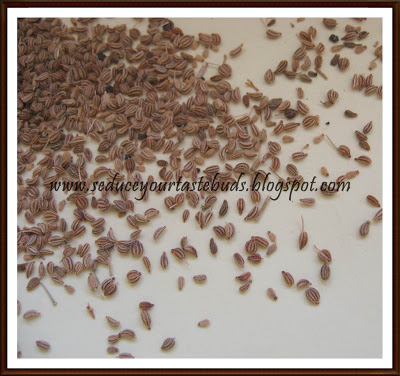 |
| Ajwain seeds |
If there is an excess of Vasambu that is soaked for the wrist band, it is ground to a paste along with soaked turmeric pieces.
 |
|
| Turmeric |
This is a herbal body wash and can be used by the new mom while bathing instead of soap.
This does not stay good for long and can be stored in the fridge and used everyday.
After the bath, the baby is given a few drops of a herbal concoction made of Vasambu,jaathikaai and machay kaai. I have written a separate post on this. You can read about this here .
From the 11th day onwards, this herbal concoction is given to the infant only on days when he is given a hair and body bath .
So on the 11th after the bath, the parents and the baby get ready for the ceremony.
It starts with prayers, lighing of lamps in the prayer room.Here is a sample of the offerings that is ready to be offered for the pooja. This is later distributed to the guests.
A priest is invited to perform the rituals. The parents sit cross legged on the floor. In front of them, a banana leaf is spread and rice is spread over it.A kalash or a pot with water that is adorned with mango leaves is also placed.
The parents perform pooja to the sacred pot / Kalash under the guidance of the priest.
The maternal and paternal grandparents gift cloths and jewels to the new parents and the baby.
Next the mom keeps the baby on her lap. The father takes a little honey and uses a golden rig,dips it in the honey and lightly smears it on the infants lip / tongue. [Nowadays the doctors recommend giving honey to infants above 1 year only!]
Then they name that they have selected for the baby is written on rice by the priest
The father then calls out the name slowly into the baby’s ears thrice.
The morning functions are over. After this the guests are given some juices/ coffee and then breakfast is served.
The rest of the day is free to chat and catch up with the family happenings. An elaborate lunch is served with payasam / kheer, Chitranna[seasoned flavored rice],sambar, rasam, 2 kosambari [lentil vegetable salad], 2 vegetable curries, kootu, ambode[lentil fritters] pappad, curds and pickle.
In the evening the cradle ceremony takes place. The cradle for the baby is decorated and kept ready.
A small grinding stone is wrapped in a silk cloth and vermilion is applied on it. This has to be first placed in the cradle before the baby is put into it. This signifies that the baby has to have a strong and healthy body.
Two unmarried girls stand opposite to each other and one hands over this stone to the other girl. The other girl receives it. i.e.One girl gives the stone from above the other girl receives it from below.
This is done thrice and then the stone is placed in one side of the cradle. Near it is placed some betel leaves, betel nuts and a pack of sundal[ seasoned legumes].
The baby is then put into the cradle and the elders sing some lullaby songs for the baby and gently rock the cradle.
Before that the elders place a dot of honey on its tongue and gently call out its name.
The sundal / seasoned legumes packet is of significance here. When this is offered to childless women, they are said to conceive soon. Not really sure why, but the elders of the family say it works!
If no such women is present in the gathering it is mixed with the remaining sundal that is prepared and distributed to all.
All in all this is a custom soaked occasion and one that is followed even today.
The naming ceremony varied from family to family and differs in each custom / culture too. This is the one we follow.
And for the finale, here is a click.Guess whose namakarna it is….
- Roast the channa dal in a pan till fragrant but the color should not turn dark.
- Switch off the flame and add the rice. Mix well and leave it in the pan to cool.
- Add 2 cups of water and pressure cook the dal and rice for 3 whistles.
- Meanwhile take the jaggery in a pan and add water just enough to submerge the powdered jaggery.
- Cook on low flame just till the jaggery melts. Strain and keep aside.
- In a pan heat the cooked rice- dal mixture, jaggery syrup, milk ,cardamom powder and coconut.
- When the mixture comes to a rolling boil, simmer and let it cook for 5 minutes, stirring gently.
- Remove from heat and serve.
Note :
- Usually, garnishes like roasted cashew / raisins are not added. It is served as such.I added it to add a nice touch to the click.
- Sugar is not used. If jaggery is not available, brown sugar can be used.
- Adjust the quantity of milk to suit your taste. Add more or less depending on how thick you prefer.
- Instead of adding grated coconut, you can add small pieces of coconut fried in ghee. It will taste great and also add a nice crunch to the kheer.
Take a look at the Blogging Marathon page for the other Blogging Marathoners doing BM#27
Bon Appetit…

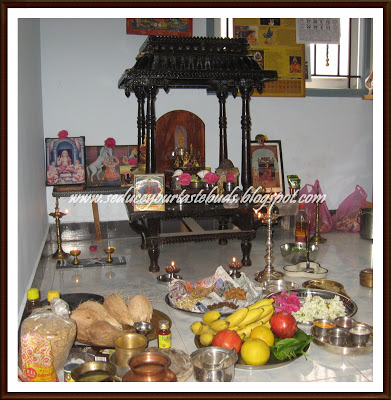
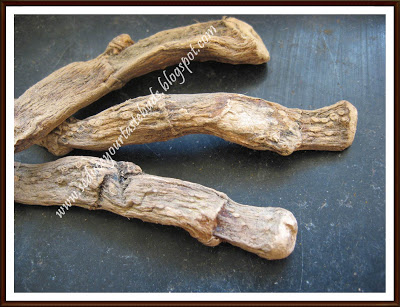




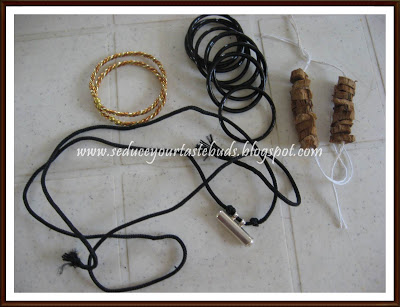
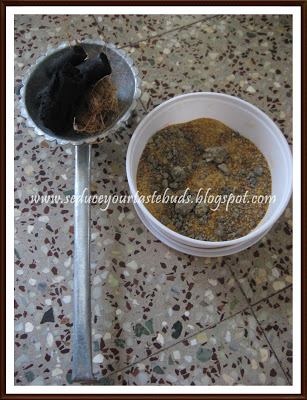

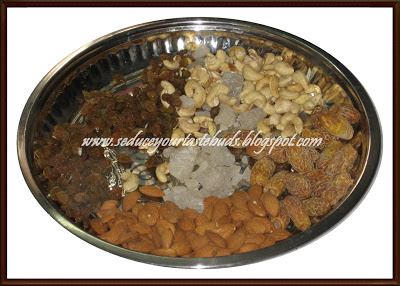
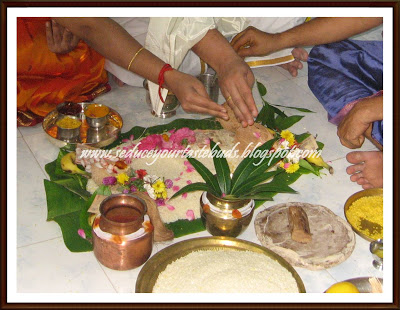

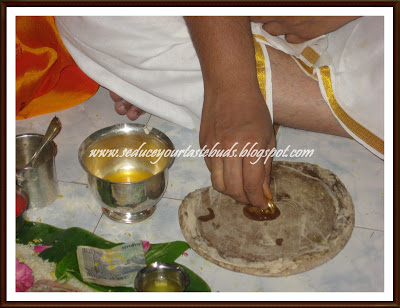
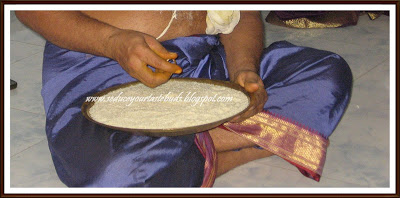
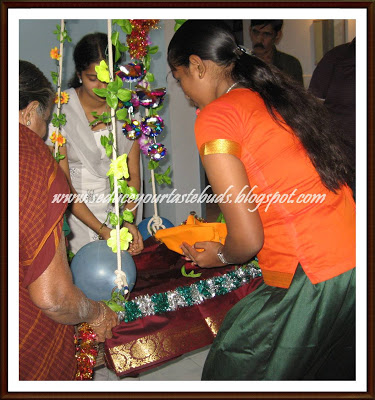
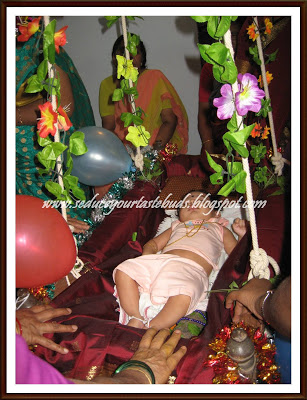

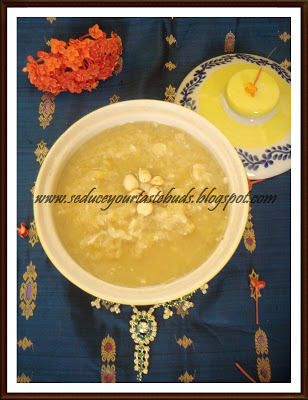
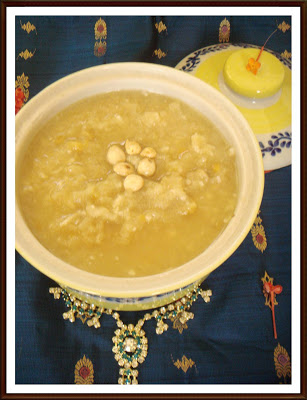


such an informative post,also i liked your post partum recipes as well 🙂
Wow… such a wonderful post 🙂 How different cultures have different ceremonies. Lovely read.
PJ I am surprised..really…I mean we just dont do anything!..all this is totally new to me..A few rituals are there ..but so many ..very interesting !!..n love that kheer!!super post!!
What a delightful and well explained post! Love all the details and pictorials 🙂 Lovely memory and occasion to share.
Amazing post about namakaran ceremony and lovely kheer recipe..
Wow ! That was a very detailed description of the event, PJ. My MIL prepares the kajal even to this day!! Love the kheer.
Wow PJ what a comprehensive post. Love the reasons you have given for various rituals.
PJ u r simply superb, love the detailed post, i have bookmarked it to go through it again, love your pateicne and flair of writing both, i do not remember what we make for our naamkarna, but kheer it would be most probably, looks delicious
PJ, I never know half the things that you have mentioned here. Thank you for the information. Very interesting post.
Nice post… with Lovely Kheer recipe…
As Pradnya said, kudos to your patience and in a way you are preserving the traditional stuff thru blogging. We couldn't celebrate the ceremony for both of our kids and so not sure even what happens during naming ceremony in our families.
And by the way, is that your namakaranam picture?
Very detailed post about the naming ceremony, we dont celebrate this ceremony and seriously happy to know the rituels behind this ceremony PJ,thanks for this wonderful post.
Kheer makes me drool,one of my fav as always.
Nice and detailed post and I missed India for my second son naamakarna, even we did one here and I hope it is your naamakarna function in black & white click..
Such an interesting post on the rituals. Thoroughly enjoyed it. The kheer also looks yumm….
PJ, this is really a post to cherish!..such a lovely read and I remembered what all we also did..:)..I think the final picture is of yours right?..and also is that a pic of Sid?..looks so cute..
Nice write up PJ..we do almost follow the same rituals..the kheer looks so delicious and creamy…
Very informative post about the naming ceremony.It brings back my son's naming ceremony.
A well explained post, PJ! Like Valli said, a post to cherish 🙂
Wonderful post. I remembered Ikshu's Punyavachanam 🙂 Some of the ceremonies are similar but others are quite different. And I am fladand surprised that you managed to click pictures of so many preparatory things. Btw, I remember my grandma telling me how she used to prepare the kajal and it was quite like this!!!
Interesting to know about even small information in naming ceremony, we don't celebrate like this, good post PJ
I can imagine a mother's joy in your post. Lovely. Though am not a big fan of this payasam, my dad loves it so much. I am always reminded of him where ever this is served.
What a well researched post PJ ! you should b congratulated for having chronicled it soo welll… our house traditions are also similar to yours, except that we dont put kajal or black thread. just the bangles.. the vashambu, sambrani etc are just d same, incl the thottilu shastram…
kudos on ur efforts..:)
Kalyani
Sizzling Tastebuds
Event : Summer Splash + Giveaway
wow a very detailed and informative post… love all these pictures for various occassions.. also the photo in the BW is your namakarana… am i correct?
Sowmya
Event – Celebrate – Summer
Event – Bake Fest
Great post PJ. We didn't celebrate naamakaram ceremony for both of our kids, so I'm not what it entails. Loved reading your post — kudos to your patience. Great job.
Absolutely beautiful! Thanks for sharing…58eveningdress.